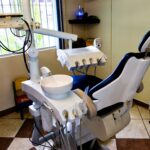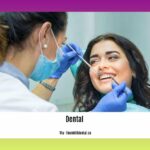Are you aware of the hidden epidemic that silently plagues young adults? Cavities by age 20 statistics reveal a startling reality that demands our attention. As a seasoned dental professional with over a decade of experience, I have witnessed firsthand the impact of cavities on the oral health of individuals under 20. In this article, we will navigate through alarming statistics, explore the reasons behind this rising trend, and discover crucial preventative measures. Get ready to unravel the shocking truth behind the cavity epidemic among our youngest generation.

Cavities by Age 20: Alarming Statistics on Oral Health
When it comes to oral health, one particular age group stands out as being especially vulnerable to cavities – individuals under the age of 20. These statistics paint a concerning picture of the cavity epidemic among our younger population. Let’s delve into the shocking cavities by age 20 statistics and explore the factors contributing to this alarming trend.
Starting with teenagers between the ages of 12 and 20, the average number of cavities is 1.03. While this number may not seem excessively high, it is still worrisome considering the relatively young age of this group. The fact that the average number increases as we move into adulthood highlights the need for early intervention and preventative measures.
As adults progress into the age range of 20 to 64, the average number of cavities rises to 3.39. This significant jump reinforces the importance of addressing oral health concerns during adolescence to prevent further damage in adulthood. These statistics clearly illustrate the pressing need for improved oral health education and preventive measures for individuals under 20 years old.
According to research, more than half, or 57%, of adolescents aged 12 to 19 have already experienced a cavity in their permanent teeth. This staggering percentage highlights the urgency to address this cavity epidemic among young adults. It’s crucial that we take immediate action to educate and create awareness about proper oral hygiene habits and preventive dental care.
The gravity of the situation becomes even more apparent when we examine the statistics for adults. Around 90% of adults aged 20 and older have had at least one cavity, and one in four adults aged 20 to 64 currently has at least one cavity. Additionally, adults in this age group have an average of more than 3 missing or decayed teeth and more than 13 decayed or missing tooth surfaces.
These statistics are further compounded by the fact that older adults between the ages of 50 and 64 have the highest prevalence of tooth decay, reaching a staggering 96%. Clearly, tooth decay is not a problem that disappears with age. It persists and worsens if proper oral health practices are not implemented early on.
Socioeconomic factors also play a role in oral health, with low-income children being twice as likely to have untreated cavities compared to higher-income children. This highlights the need for accessible dental care and targeted interventions to address the disparities in oral health among different socioeconomic groups.
Moreover, untreated dental caries remain a significant issue among adults. About 25.9% of adults aged 20-44, 25.3% of adults aged 45-64, and 20.2% of adults aged 65 years and older have untreated dental caries. This emphasizes the importance of regular dental check-ups and prompt treatment to prevent further damage and complications.
The statistics surrounding cavities by age 20 are certainly cause for concern. They indicate a pressing need for improved oral health practices, education, and access to dental care for young individuals. By emphasizing the importance of proper oral hygiene habits, regular dental check-ups, and early intervention, we can combat the cavity epidemic and improve the oral health outcomes for the younger generation.
In conclusion, the cavities by age 20 statistics present a clear picture of the oral health challenges faced by young individuals. The alarming prevalence of cavities among this age group highlights the need for immediate action. By promoting oral health education, accessible dental care, and early preventative measures, we can work towards a future where cavities by age 20 become a thing of the past.
In a world where dental health is often overlooked, wouldn’t it be fascinating to discover the average number of cavities one can expect by the age of 20? Well, look no further, because we have the answer for you! Click here to delve into the comprehensive analysis and insights on the average number of cavities by age 20. Unveil the secrets behind dental hygiene and explore the factors that can contribute to this statistic. Knowledge is power, so don’t miss out on this eye-opening revelation. Average Number Of Cavities By Age 20
FAQ
Question 1
What is the average number of cavities for teenagers between the ages of 12 and 20?
Answer 1
The average number of cavities for teenagers between the ages of 12 and 20 is 1.03.
Question 2
What is the average number of cavities for adults between the ages of 20 and 64?
Answer 2
The average number of cavities for adults between the ages of 20 and 64 is 3.39.
Question 3
What percentage of adolescents aged 12 to 19 have had a cavity in their permanent teeth?
Answer 3
Approximately 57% of adolescents aged 12 to 19 have had a cavity in their permanent teeth.
Question 4
What percentage of adults aged 20 and older have had at least one cavity?
Answer 4
Approximately 90% of adults aged 20 and older have had at least one cavity.
Question 5
How many missing or decayed teeth do adults between the ages of 20 and 64 have on average?
Answer 5
Adults between the ages of 20 and 64 have an average of more than 3 missing or decayed teeth.
- Unlock 6000+ words beginning with he: A comprehensive analysis - April 20, 2025
- Mastering -al Words: A Complete Guide - April 20, 2025
- Master Scrabble: High-Scoring BAR Words Now - April 20, 2025
















